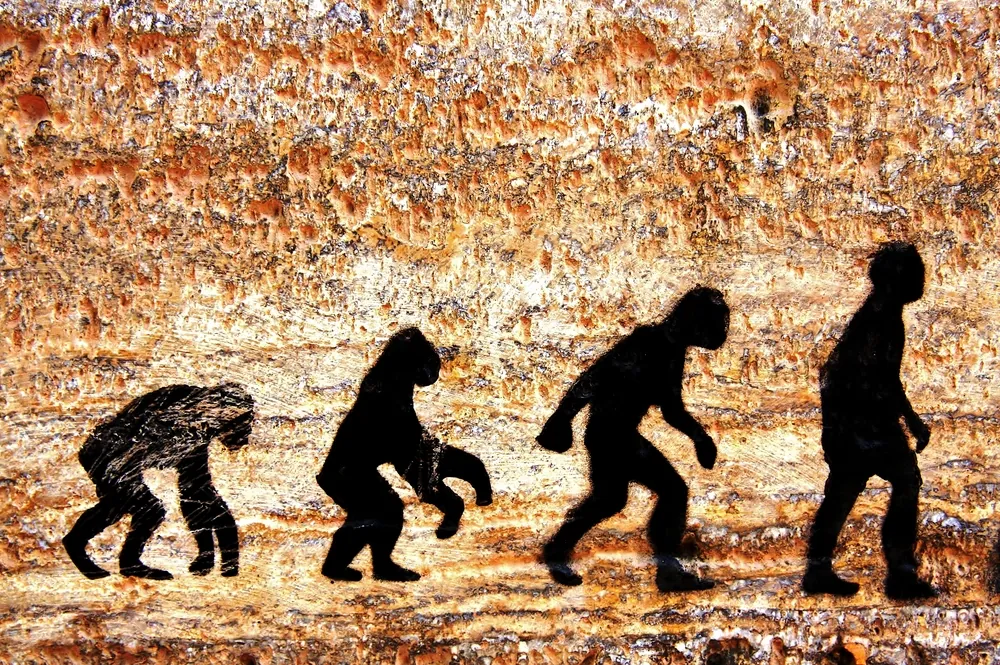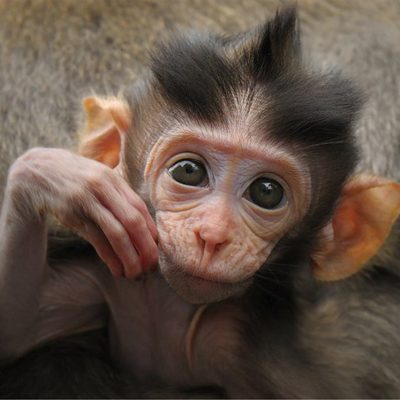“Descended from monkeys?… Let’s hope it’s not true, but if it is, let’s pray that it doesn’t become known to the world.” The Bishop of Worcester’s wife’s hopes and prayers were in vain: Darwin was right! The cradle of humanity was established in Africa when life on Earth had already flourished for four billion years. Our ancestors left Africa 70 thousand years ago. Fossils tell us that there were other people in the past. Did Homo sapiens live with other human species? Charles Darwin not only overturned natural science but also turned baseless religious myths about our origin into Nazareth. Who was this man, a genius or a wild fantasist? Are we really all Africans?
If I could break the boundaries of time and space, I would travel to Africa two million years ago. Africa’s humid, dry climate, and massive forests are replaced by vast fields. In the savannahs of the mother continent of mankind, the first people will walk properly. The main character of this picture is Homo habilis, the first representative of our human genus.
Among the infinite and amazing forms of life, our closest biological address is “Homo”. Modern humans are not the only humans to have ever seen sunlight. During the last 2 million years, about two dozen species of the genus Homo have disappeared from the earth. Homo habilis started the human evolutionary odyssey, and we, Homo sapiens, represent the last stage of its development.
Yes, we are all Africans! Many people find it hard to believe this obvious fact today, but two centuries ago, Charles Darwin proposed an amazing hypothesis on this matter. In 2016, physicists observed gravitational waves. The whole world was rightly amazed that this discovery was predicted by Albert Einstein. Unfortunately, little mention is made of Charles Darwin when his ideas have been proven and supported by facts for two centuries. In the 19th century, when the English naturalist was working, no fossil forms of the closest relatives of modern man had been discovered. He only had the opportunity to observe our living “cousins” chimpanzees and gorillas, which are the inhabitants of Africa. In his book, The Descent of Man and Sexual Selection (1871), Charles Darwin wrote that if we were ever to find fossilized human ancestors, Africa would be the place to find them. Indeed, fossils of the oldest ancestor of our species have also been found in Africa.
Not even a year has passed since the skull found in the cave of Jebel Irghudi in Morocco “aged” our species by 100 thousand years. Almost two million years after the origin of the first humans Homo habilis and Homo rudolfensis, 300 thousand years ago our species appeared. For millennia, the strict rules of natural selection changed the characteristics of humans: our fingers became shorter and less flexible, we began to work on trees. The size of the teeth and jaws also decreased, we started eating meat and processing food. Most importantly, the volume of the human brain began to increase in size. According to the discovered skull of Homo Habilis, their brain volume should have been 600 cm3. Amazingly, the volume of our brain has reached 1350 cm3. The growth of the brain laid the foundation for both our anatomical and social development. For example, we have developed a new form of communication: speech.
The development of thought allowed us to leave Africa, the original homeland of mankind. The first journey of our species outside of Africa dates back to 200,000 years ago. Evidence is provided by an ancient jawbone found in Mislai Cave, Israel. It turns out that the first Homo sapiens to leave Africa made amazingly sophisticated stone tools. They hunted antelopes, wild boars, rabbits, turtles, and ostriches. By this time, the humid climate in former Asia allowed us to settle there, but a radical change in climate, a period of extreme drought, suppressed the Asian “expedition” of our species. Apparently, the first Homo sapiens migrants died out.
We also lived alongside other “Homo” species of modern humans in Africa, Europe, and Asia. In addition to fierce competition for resources, we may have had sex with each other at times. Before the appearance of Homo sapiens, the human species Homo neanderthalensis lived on the continent of Europe and East Asia. There is a theory that 2 percent of the modern population, other than Africans, is of Neanderthal origin and passed on to us as a result of interbreeding with them. They fasted and cared for the dead, made tools from bone, used medicinal plants, and created fascinating works of art. Neanderthals became extinct 30 thousand years ago.
The first successful expedition of modern man from Africa dates back to about 70 thousand years ago. Before we got lost in the savannahs of Africa, other human species got a foothold on the continents of Europe and Asia. Hospitality among people on new continents went badly. The last human species other than Homo sapiens to live on Earth 18,000 years ago was Homo floresiensis. After the extinction of the “hobbits” living on the remote island of Flores in Indonesia, we humans were left alone. With our developed thinking apparatus, we were the first to conquer other continents of the earth. “Light will be shed on the origin of man and his history,” wrote Charles Darwin in the book “On the Origin of Species” (1859). He proved to be right again; we have learned a lot about our roots, but the Earth still holds many evolutionary secrets.
The closest biological address of humans is “Homo”. We have many more biological addresses, including the subfamily: “Simiiformes,” or monkeys. The pathos of the letter of the Bishop of Worcester’s wife still expresses the pathos and weakness of people who try to deny the evolution of man and the living world. I am not worried. “The beauty of science is that it’s true whether you believe it or not.” – Neil deGrasse Tyson.
Source: Montagu, M. F. Ashley. Man’s Most Dangerous Myth: The Fallacy of Race. New York, Chichester, West Sussex: Columbia University Press, 1945. https://doi.org/10.7312/mont91916.
Global Human Journey. Home - National Geographic Society. n.d.-a. https://www.nationalgeographic.org/media/global-human-journey/.
Dawkins, Richard. 2009. The Greatest Show on Earth: The Evidence for Evolution. London: Bantam Press.
Guardian News and Media. 2018. “Oldest Known Human Fossil Outside Africa Discovered in Israel.” The Guardian, January 25. https://www.theguardian.com/science/2018/jan/25/oldest-known-human-fossil-outside-africa-discovered-in-israel.
Morwood, M., R. Soejono, R. Roberts, et al. 2004. “Archaeology and Age of a New Hominin from Flores in Eastern Indonesia.” Nature 431: 1087–1091. https://doi.org/10.1038/nature02956.
Science Shop
Advertisement










